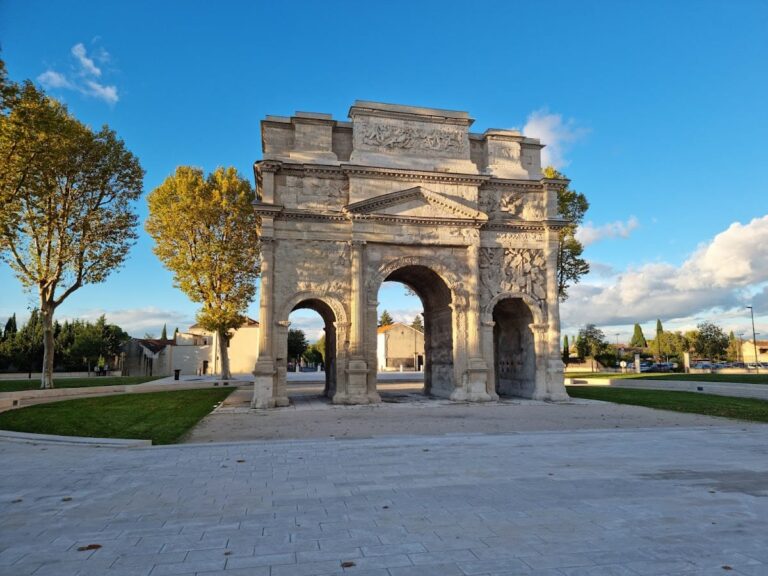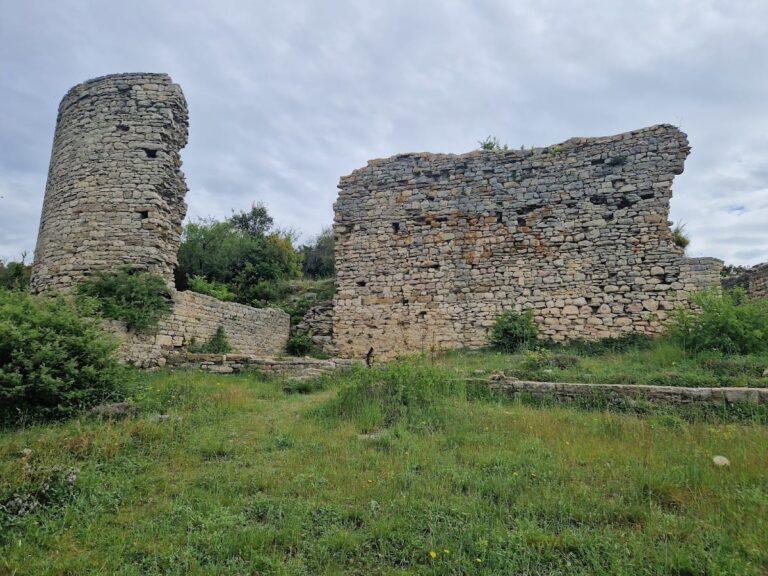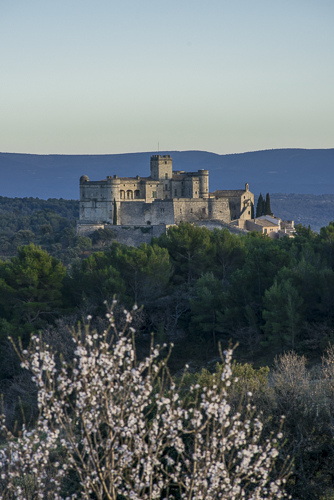Château de Suze-la-Rousse: A Historic Castle and Center for Viticulture in France
Visitor Information
Google Rating: 4.3
Popularity: Medium
Google Maps: View on Google Maps
Official Website: www.chateaux-ladrome.fr
Country: France
Civilization: Medieval European
Remains: Military
History
The Château de Suze-la-Rousse is located in the village of Suze-la-Rousse, France, and its origins trace back to the Gallo-Roman period when a fortified castrum occupied the site. In the early Middle Ages, specifically in 793, the territory including Suze was granted by Charlemagne to his cousin Guillaume as a reward for military support, establishing the location as a hunting estate.
During the 12th century, the castle’s significance grew when Tiburge II of Orange married Bertrand I des Baux in 1173. Bertrand initiated the construction of a military fortress incorporating natural ochre rock. This fortification featured imposing defensive walls, deep moats, a drawbridge, battlements, and a well reaching 34 meters deep. The Saint-Turquois chapel also formed part of this early medieval stronghold.
Ownership passed through various noble families over the centuries. In 1426, the House of Baux transferred control to the La Baume-Suze line. From 1551 onwards, this family transformed the medieval fortress into a Renaissance-style noble residence. Their renovations included creating a courtyard in Renaissance fashion and, notably in 1564, constructing a jeu de paume court—a precursor to modern tennis—to welcome the visit of Queen Catherine de Médicis and King Charles IX.
Between the 16th and 18th centuries, the castle was further enhanced with artistic and architectural additions, such as painted and stucco decorations, large fireplaces, a grand staircase, an octagonal study, the Saint-Michel chapel, and richly adorned reception rooms. These improvements reflected the castle’s shift from military defense to a refined residential estate.
During the French Revolution, the château suffered partial looting, leading to a decline in its condition. In 1797, ownership passed to the Isnards-Suze family, who undertook significant restoration efforts throughout the 19th century, preserving and renewing the castle’s structure.
In the 20th century, Éliane Isnards, the final private owner, bequeathed the château to a charitable foundation in 1958. It was then sold in 1965 to the Drôme General Council, which committed to its restoration. Since 1978, the castle has housed the private University of Wine, dedicated to the study and education of viticulture and oenology, occupying spaces on the second floor and within the former stables. The château and its surrounding park have been recognized as a historic monument since 1964 and serve as a cultural venue for classical music and circus performances, particularly within the acoustically exceptional Renaissance courtyard.
Remains
Perched atop a hill overlooking the village, the Château de Suze-la-Rousse is enclosed by dry moats and accessible via a fixed bridge spanning the moat to the main gate. Its three-story structure centers around a rectangular inner courtyard rebuilt in the Renaissance style. The facades present there have been carefully restored to reflect the Renaissance aesthetic, harmonizing the castle’s medieval origins with later architectural trends.
Within the courtyard stands the kitchen, which notably benefits from a well designed with dual access, allowing efficient delivery of water. Nearby lies an ancient chapel, recalling the site’s longstanding religious associations. Opposite the main entrance is a large ceremonial hall, which serves as a gathering space, complemented by a grand staircase that provides access to the upper floors.
An important feature of the castle is the jeu de paume court, constructed in the mid-16th century for the royal visit of Charles IX and Catherine de Médicis in 1564. Measuring approximately 32.5 meters long and 10.6 meters wide, it retains its traditional dimensions from the early form of the game ancestor to tennis. This court was played with wooden rackets and included a net, highlighting its historical role in leisure activities of the nobility.
The Saint-Michel chapel, once the funerary chapel for the La Baume lords, is a distinguished part of the estate and has been separately listed as a historic monument since 1981. It stands as a preserved religious space within the castle grounds, reflecting the spiritual practices connected to the noble families.
Surrounding the château is a 23-hectare wooded park, which includes a rose garden and an ampelographic collection—a plant collection focusing on grapevines—featuring 70 varieties from France and abroad. This botanical diversity emphasizes the site’s ongoing link to viticulture, echoing its current role through the University of Wine.
The Renaissance courtyard is celebrated for its remarkable acoustic properties. Its walls reflect and amplify sound, creating an environment particularly suited to musical recitals and theatrical performances. This unique feature connects the historical architecture to contemporary cultural use, preserving the château’s dynamic legacy.










